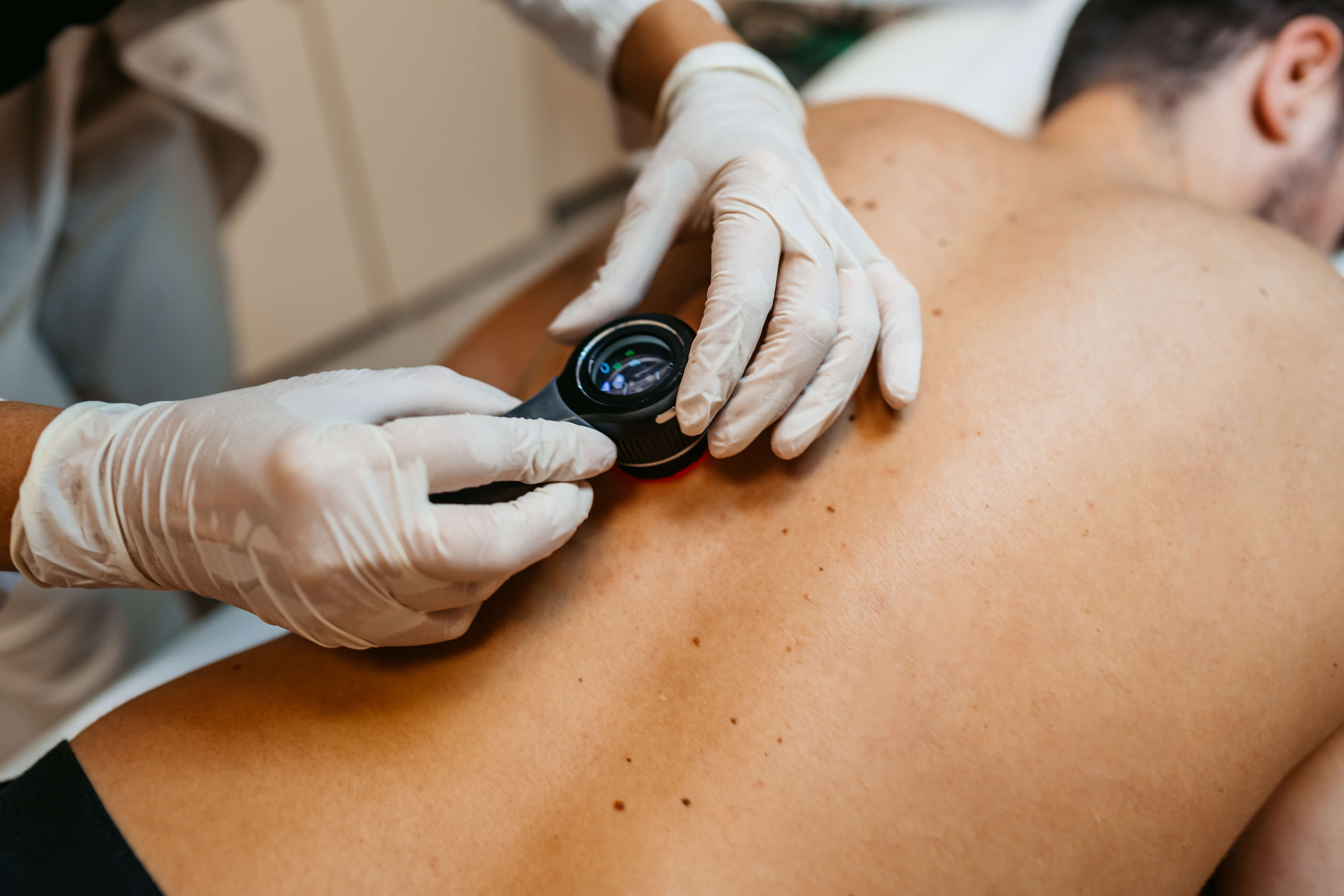
WHY IS IT IMPORTANT TO EXAMINE YOUNG PEOPLE REGULARLY?
Regular mole examinations by a dermatologist are crucial for maintaining skin health and preventing the development of skin cancer, including melanoma, the most dangerous form of skin cancer. Moles, or nevi, are benign formations that appear on the skin due to accumulation of pigment, and most of them are completely harmless. However, certain moles may change shape, size or color over time, which may be a sign of malignancy. That is why it is important to monitor skin changes and regularly visit a dermatologist, in order to detect potentially dangerous changes in time.
A review of moles includes several key elements. The dermatologist uses a dermatoscope, a specialized device that allows a detailed insight into the structure of moles, which makes it easier to recognize possible signs of malignant changes. In addition, the dermatologist carefully analyzes all moles on the body, including those located in hard-to-reach places such as the scalp or between the fingers, which are often overlooked.
It is recommended that people with a large number of moles, especially if they have a family history of skin cancer, have regular checkups. Also, people with lighter skin, who tend to sunbathe or have had sunburns, should be especially careful. Dermatologic examinations may be recommended annually, or more frequently, depending on the patient's risk and specific circumstances.
One of the important criteria for recognizing suspicious moles is the so-called "ABCDE" rule. This means looking out for mole asymmetry, irregular edges, discoloration, increase in size, and bleeding or itching. If any of these changes are noticed, it is necessary to visit a dermatologist immediately.
ABCDE rule:
And for asymmetry: One half of the mole does not match the other half.
B for Edge: The edges of the mole are irregular, uneven, or indistinct.
C for Color: The mole has multiple colors or uneven pigmentation.
D for diameter: The mole is larger than 6 mm.
E for Development: A mole changes in size, shape or color over time.
If you notice any of these signs, you should make an appointment with a dermatologist for further evaluation.
Skin self-examination should be done regularly, approximately once a month. Begin by examining the entire body, including the back, arms, legs, palms, soles, between the toes, and scalp, using a mirror for hard-to-reach areas. Use another mirror to check your back and neck.
Regular examination of moles does not only mean recognizing potential problems, but also educating patients about the correct way to protect themselves from the sun, as well as self-examination of the skin, which should be performed between dermatological examinations.
Proper sun protection means sun protection with clothing and sunscreen creams with broad spectrum SPF 30+ (UVA and UVB) half an hour before going outside, repeat every two hours and after swimming in the sea. Avoid the sun in the period from 09:00 to 17:00. Do not use the solarium!!! Monitor the UV index and plan your activities against it.
In conclusion, regular examinations of moles by a dermatologist play a key role in the prevention of skin cancer and allow a timely reaction in case of any changes.
Prevention is the best way to preserve skin health and prevent the development of serious diseases.

